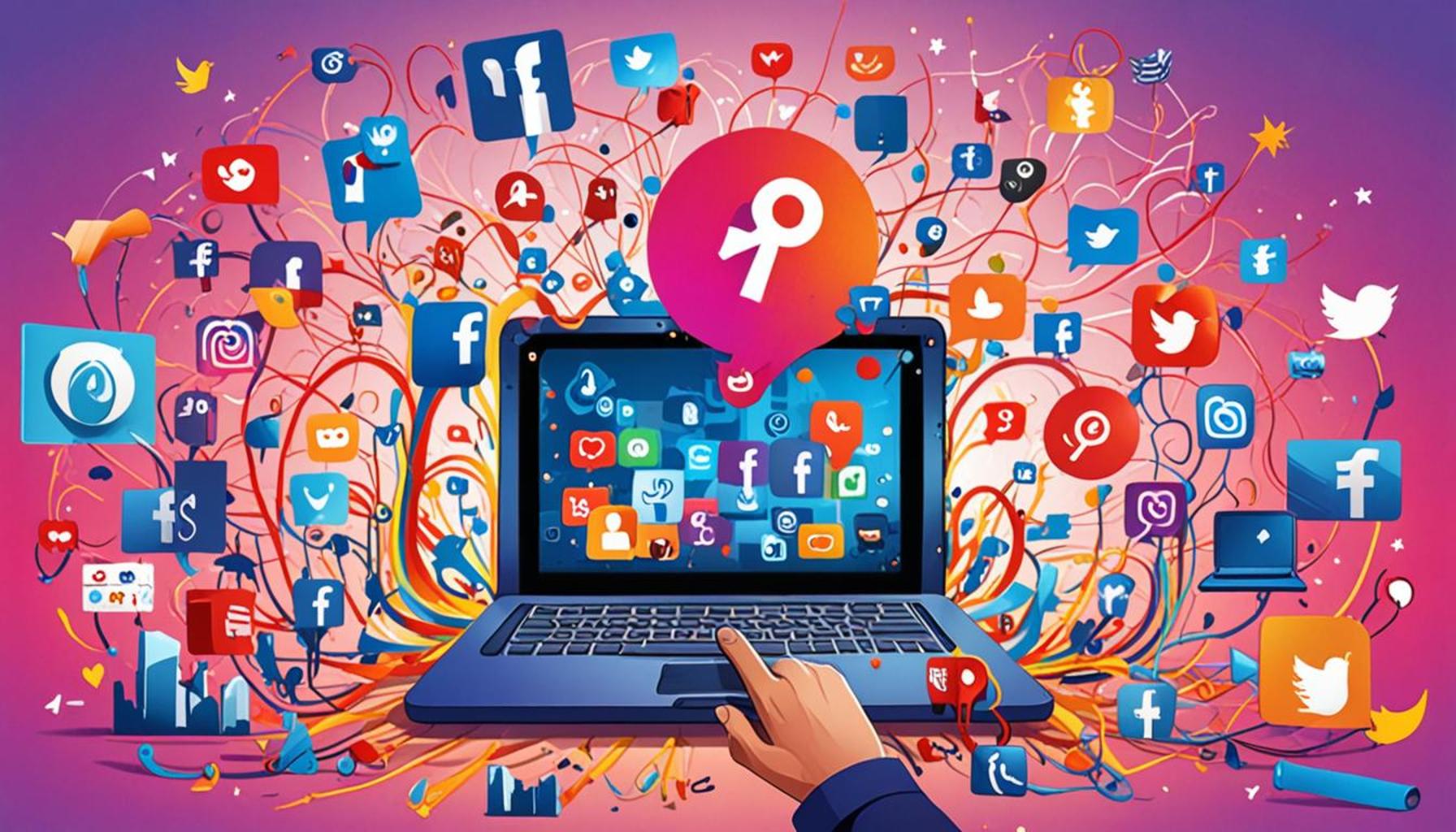Evaluation of the Impact of Social Media on the Promotion of Government Benefits and Access to Information

The Impact of Social Media on Government Communication
In an era where connectivity is paramount, social media platforms such as Facebook, Twitter, and Instagram have reshaped the landscape of communication, particularly in the realm of government outreach. With over 70% of adults in the U.S. actively engaging on these platforms, they provide a sophisticated tool for government entities to promote government benefits and enhance access to vital information.
One of the most significant advantages of utilizing social media for government outreach is its ability to foster engagement with citizens. For instance, in times of crisis, such as during natural disasters or public health emergencies, platforms like Twitter have been instrumental in providing timely updates. Organizations like FEMA have effectively utilized Twitter to disseminate critical safety information and updates on relief efforts, allowing real-time communication that can save lives. Furthermore, social media’s multimedia capability—incorporating images, videos, and live video feeds—can enhance messages, making them more digestible and engaging for the audience.
Another important aspect is information dissemination. Social media facilitates rapid updates on various programs such as unemployment benefits and healthcare enrollment. During the COVID-19 pandemic, for example, government agencies used these platforms to inform citizens about new benefits, application processes, and deadlines. The Centers for Medicare and Medicaid Services (CMS) leveraged Facebook to reach millions while explaining the intricacies of health care options available under the Affordable Care Act, showcasing the power of these platforms in breaking down complex information.
Moreover, social media serves as a platform for public feedback, promoting two-way communication between governments and citizens. This engagement can provide valuable insights into public needs and sentiments. For example, town halls and live Q&A sessions on platforms like Instagram or Facebook Live have enabled citizens to directly interact with their local representatives, share concerns, and ask questions in real-time. This level of interactivity not only fosters trust but also increases the likelihood of citizen participation in government initiatives.
Despite these advancements, there remain critical questions regarding the efficacy of these outreach efforts. Are these platforms truly effective in raising awareness about government benefits? Research indicates that while many individuals are aware of available programs, a significant number still struggle to navigate the application processes. This disconnect suggests that merely posting information on social media is not enough. It raises the question: how can governments ensure that communication on social media translates into actionable understanding among the public?
This exploration of social media’s role in government outreach is crucial in evaluating its impacts, challenges, and opportunities. By analyzing real-world examples and statistical data, we can better understand how these communications shape public knowledge and engagement, encouraging further inquiry into the potential for more effective government-citizen interactions in the digital landscape.
CHECK OUT: Click here to explore more
Transforming Communication: Understanding the Dynamics of Government Benefits Promotion
As social media becomes increasingly ingrained in everyday life, the necessity for government entities to adapt their communication strategies has never been more pressing. It is essential to evaluate how social media impacts the promotion of government benefits and access to crucial information for citizens. Despite the widespread use of these platforms, gaps still exist in their effectiveness, leading to unanswered questions about their true potential.
A key aspect to examine is the reach of government messaging through social media. According to recent studies, about 79% of the U.S. population uses social media regularly, illustrating an unprecedented opportunity for government agencies to extend their reach. However, simply having a presence on social media is not enough; the nature of content shared is pivotal. Engaging visuals, clear messages, and timely information can significantly enhance visibility and retention. For example, infographics explaining complicated benefits processes can break down barriers to understanding for less tech-savvy individuals.
Furthermore, the role of demographics and platform popularity plays a crucial part in effective communication. Different segments of the population gravitate toward different platforms. Understanding this demographic breakdown is essential for tailoring messages. For instance:
- Facebook is generally favored by a more diverse age group, making it suitable for promoting a range of government benefits.
- Twitter, known for its fast-paced nature, is more effective for real-time updates, crisis communication, and urgent announcements.
- Instagram attracts a younger demographic, providing an avenue for visually driven messages that can engage a fresh audience.
This segmentation indicates that different strategies must be employed on various platforms to optimize message absorption and retention among targeted groups. As such, it is vital for government agencies to develop an iterative strategy that evolves with shifts in user behavior and platform capabilities.
Moreover, the interaction trends on these platforms showcase how citizen engagement has expanded. Government agencies have reached new heights in user interactions through polls, Q&A sessions, and real-time feedback loops. However, it is important to recognize that not all interactions are equally effective in contributing to the understanding or execution of government programs. A simple “like” or retweet does not equate to comprehension or action. Evaluation processes must go beyond merely counting engagements; they should analyze how these interactions translate into increased knowledge and participation.
To truly evaluate the impact of social media on government benefits promotion, it would be prudent to explore concrete metrics. This could involve assessing the rate of applications for benefits following social media campaigns, conducting surveys to gauge public knowledge before and after targeted posts, or analyzing case studies from various government bodies that have employed unique social media strategies. By adopting a comprehensive approach, we can begin to unravel the complexities of social media’s effectiveness in bridging the gap between information availability and citizen action.
Ultimately, social media, while a powerful tool, presents both remarkable opportunities and daunting challenges in the realm of government communication. As we advance further into the digital age, it is imperative to critically assess these platforms and understand their role in facilitating informed citizen engagement in public life.
| Advantage | Impact |
|---|---|
| Increased Awareness | Government programs gain visibility, reaching audiences that may not engage with traditional media. |
| Accessibility of Information | Social media serves as an essential platform where information about benefits is readily available, fostering an informed public. |
| Community Engagement | Platforms facilitate interaction between citizens and governmental bodies, enhancing trust and responsiveness. |
| Timely Updates | Social media allows for immediate dissemination of news and changes regarding government benefits, keeping the public continually informed. |
The exploration of how social media is utilized to promote government benefits and ensure access to information reveals a transformative shift in communication strategies. Policy-makers leverage these platforms to engage citizens, breaking down barriers of communication that previously hindered access to critical services. The digital landscape promotes not only the transparency of operations but also invites constructive feedback, creating a two-way dialogue that enhances public participation. For individuals who might have faced challenges navigating bureaucratic processes and resources, the advent of social media presents a game-changing opportunity. By providing updates, answering inquiries, and sharing success stories, government entities can increase the overall trust in public service. Explore how these dynamics evolve as social media continues to shape governmental interactions in the digital age.
YOU MAY ALSO LIKE: Read read another article
Engaging Citizens: Evaluating the Effectiveness of Social Media Outreach
The role of social media in enhancing citizen knowledge about government benefits extends beyond mere messaging; it also encompasses engagement strategies that can transform passive users into active participants. The success of campaigns aimed at informing the public about available benefits hinges on how well social media platforms can facilitate conversations and feedback loops between government agencies and the citizenry. By examining these interactions, we can unearth valuable insights into the effectiveness of these digital outreach efforts.
A central component of this evaluation involves analyzing engagement quality. For instance, platforms like Facebook and Twitter empower users to share personal stories, which can humanize government initiatives and demonstrate their real-life impacts. Such narratives not only captivate audience attention but can also foster a sense of community among beneficiaries. For example, during the rollout of the Pandemic Emergency Unemployment Compensation (PEUC) program in 2020, social media campaigns celebrated stories from individuals who benefitted from the program, effectively illustrating its importance and encouraging others to apply.
Moreover, live streaming and interactive webinars hosted by government representatives on platforms such as Instagram and Facebook enable real-time engagement and clarification of complex application processes. These formats allow citizens to ask questions, thereby demystifying procedures that might otherwise deter potential applicants. Such technological innovations strengthen the relationship between government agencies and citizens while amplifying the reach of essential information.
In addition to evaluating engagement strategies, it is vital to consider the role of targeted advertising on social media platforms. By utilizing advanced algorithms and demographic information, government agencies can deliver tailored messages to specific audiences, ensuring that the right people receive crucial information about benefits. For example, ads for the Supplemental Nutrition Assistance Program (SNAP) could be precisely targeted at low-income neighborhoods, significantly increasing the likelihood of application and access to resources. Studies indicate that targeted ads can improve conversion rates by up to 50%, demonstrating a tangible impact on public engagement.
Another intriguing aspect of social media’s impact lies within the realm of analytics and data gathering. Agencies can monitor interactions and use this data to gain insights into public sentiment and awareness levels. By analyzing comments, shares, and reaction trends, agencies can fine-tune their approaches, identifying which messages resonate most effectively with viewers. For example, the U.S. Department of Veterans Affairs utilized social media analytics to discover gaps in information regarding veterans’ benefits, subsequently adjusting their communication strategies to remedy these areas. Not only does this improve the agency’s efficiency, but it also enhances public service delivery.
Furthermore, the use of hashtags and campaigns focused on a specific theme can unify discussions across different platforms. Campaigns such as #BenefitsBackers can rally support and encourage discussions, leading to a more significant exchange of information. This collective engagement fosters a sense of civic duty, encouraging individuals to advocate for their own rights and interests, and guiding their peers towards available support systems.
Through the lens of social media, the promotion of government benefits and access to information transforms into a multifaceted endeavor, blending creativity with data-driven decisions. By continuously examining interaction patterns, implementing targeted approaches, and fostering community-driven dialogues, government agencies can better understand the implications of their social media strategies and ultimately enhance public engagement in essential government programs.
CHECK OUT: Click here to explore more
Conclusion: The Future of Social Media in Government Communication
The exploration of social media’s impact on the promotion of government benefits and access to information reveals a transformative tool that continues to shape the interaction between citizens and their government. As seen through various campaigns and engagement strategies, the digital landscape not only facilitates the dissemination of crucial information but also actively involves citizens in a dialogue that can lead to improved public understanding and accessibility. The effectiveness of social media outreach relies on its ability to convert passive consumers into engaged participants, thereby creating a more informed electorate.
Moreover, the integration of targeted advertising and analytics offers government agencies a powerful mechanism to reach specific demographics efficiently. This capability enhances the likelihood of individuals accessing vital benefits they may have otherwise overlooked. Similarly, the power of storytelling on platforms like Twitter and Instagram underscores the human element of government initiatives, fostering a greater connection between entities and their constituents.
As social media continues to evolve, the potential for fostering greater civic engagement and communication is vast. The ongoing challenge will be to ensure that these channels remain inclusive, friendly, and readily accessible to all members of society, particularly marginalized communities. It is imperative for government agencies to adapt their strategies and leverage the latest trends in social media to ensure that vital information about government benefits reaches those who need it the most.
Ultimately, the ongoing evaluation of the impact of social media on governmental communication strategies will not only illuminate areas for improvement but also highlight the significant role that technology plays in enhancing public service delivery. Embracing this innovative approach could pave the way for a more participatory democracy, where citizens feel empowered to access the resources and support systems that they deserve.



